On View
Is This the Most Important Exhibition of 2018? Take a Look Inside the Louvre’s Massive Delacroix Retrospective
The show includes some of the painter's most famous—and scandalous—works.

The show includes some of the painter's most famous—and scandalous—works.

“The genius of Delacroix is not debatable, it is not demonstrable, it is something one feels,” wrote the French writer Alexandre Dumas.
The Louvre is currently hosting a once-in-a-generation tribute to the French artist’s genius. The massive retrospective of Eugene Delacroix brings together 180 works from every stage of his career. It has been organized with the Metropolitan Museum of Art in New York, where it will open on September 17 (though without a few of the massive paintings that can only fit comfortably in the Louvre).
Once a regular on the Paris scene, Delacroix hasn’t had a full-dress retrospective in the city since the centenary of his death in 1963. This exhibition, organized by the Louvre’s Sébastien Allard and Côme Fabre and the Met’s Asher Miller, traces Delacroix’s explosive trajectory and restless mind. As a young artist, he made a splash at the Salon, the annual exhibition of contemporary art held at the Louvre. Later in life, his experiments with pointed brushstrokes seem to preface Impressionism.
So far, the reviews of the exhibition have been breathless. The FT‘s Jackie Wullschlager wrote: “If there is one exhibition worth traveling for this year, it is the Louvre’s gripping, spectacular survey of the most singular, contradictory, extreme artist of the 19th century.”
Museums from around the world—including France, the US, the UK, Germany, Canada, Belgium, and Hungary—have contributed loans to the ambitious show. Many of the artist’s most famous—and provocative—works are included, such as The Death of Sardanapalus, the orgiastic suicide scene that drew unanimous outrage when it was shown at the Salon of 1828.
Also on view is Delacroix’s celebration of the 1830 revolution, Liberty Leading the People (1831), which gained new political currency after the French president Emmanuel Macron pointedly took Saudi Arabia’s crown prince Mohammed Bin Salman to see it during his recent visit to the French capital. The exhibition also features lesser-known examples of Delacroix’s virtuosity, including skilled lithographs like Macbeth and the Witches.
Check out some of the works in the historic exhibition, on view through July 23 at the Louvre, below.

Eugène Delacroix, July 28, 1830: Liberty Leading the People (1830). Musée du Louvre, Paris © RMN-Grand Palais (musée du Louvre) / Michel Urtado.

Eugène Delacroix (1798-1863). “Le Christ au jardin des Oliviers”. Huile sur toile, 1827. Paris, église Saint-Paul – Saint-Louis.
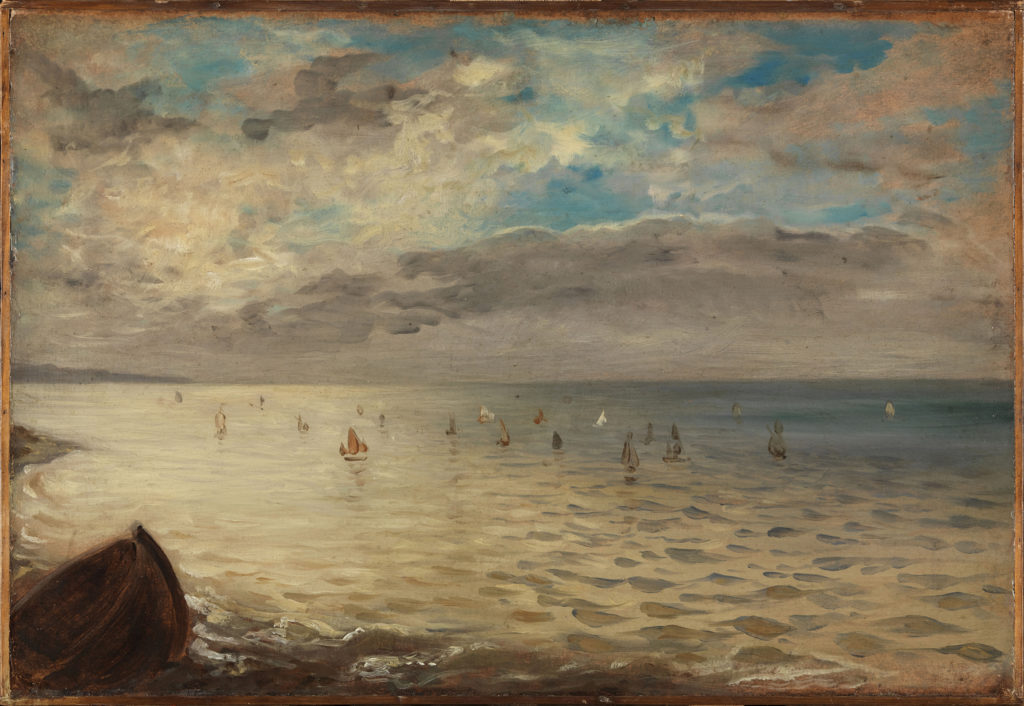
Eugène Delacroix, The Sea from the Heights of Dieppe (Circa 1852). Musée du Louvre, Paris © RMN-Grand Palais (musée du Louvre) / Philippe Fuzeau.

Eugène Delacroix, Othello and Desdemona (1847-1849). National Gallery of Canada, Ottawa © Photo : MBAC.
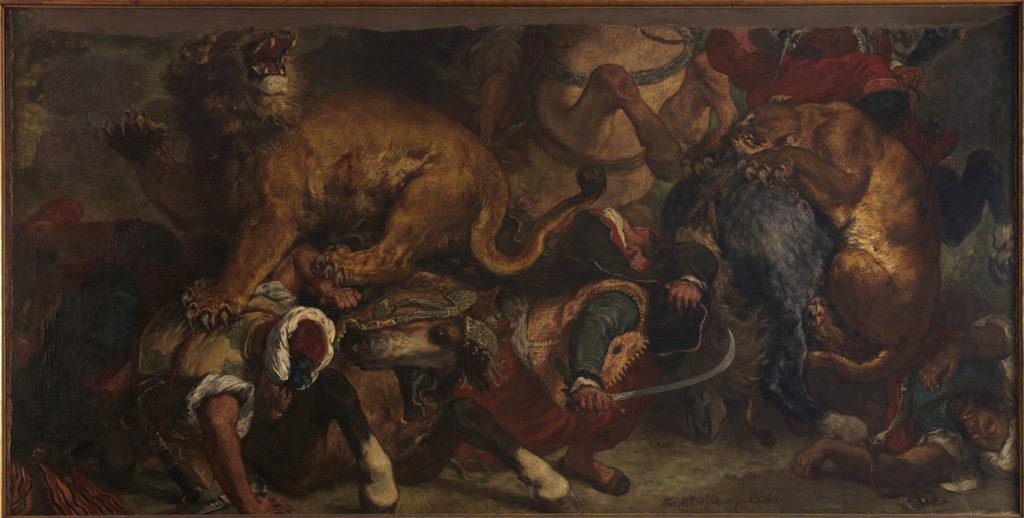
Eugène Delacroix, Lion Hunt (1854-1855). Musée des Beaux-Arts, Bordeaux © Musée des Beaux-Arts, ville de Bordeaux. Cliché L . Gauthier, F . Deval.

Eugène Delacroix, Basket of Flowers (1848-1849). The Metropolitan Museum of Art, New York Image © The Metropolitan Museum of Art.

Eugène Delacroix, Medea About to Murder Her Children (1838). Palais des Beaux- Arts, Lille © RMN-Grand Palais / Stéphane Maréchalle.

Eugène Delacroix, Women of Algiers in Their Apartment (1833- 1834). Musée du Louvre, Paris © RMN-Grand Palais (musée du Louvre) / Franck Raux.
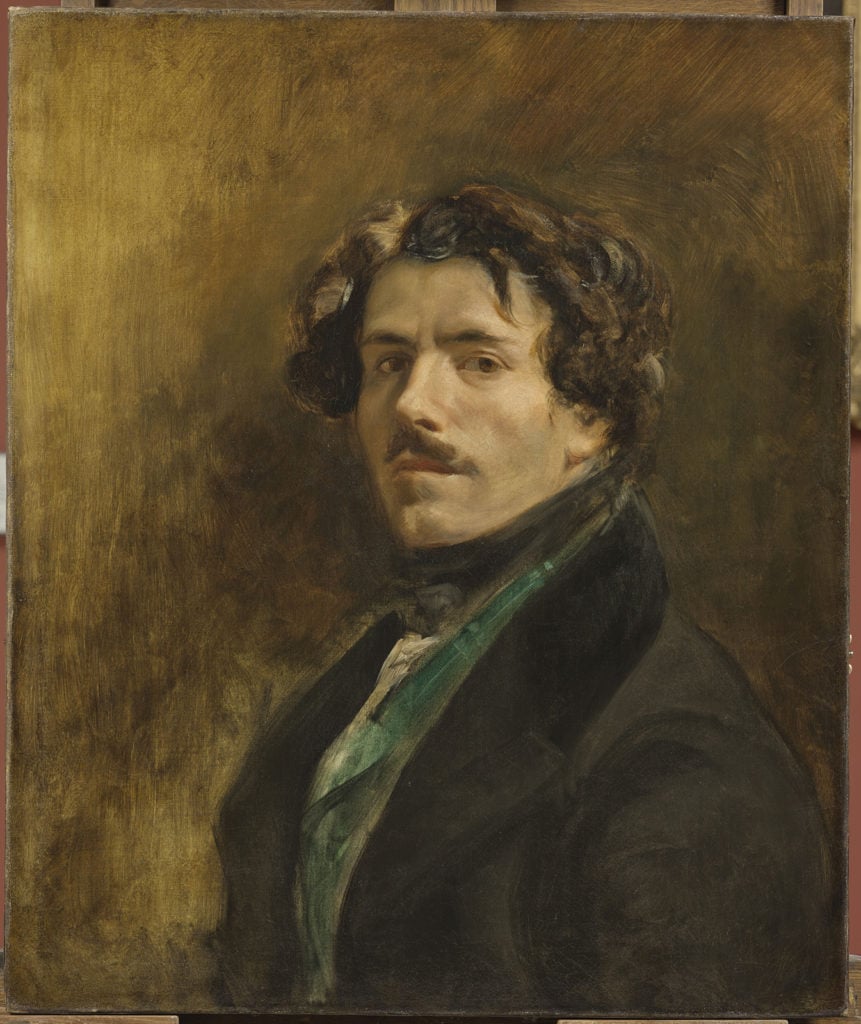
Eugène Delacroix, Self-Portrait with Green Vest. (Circa 1837). Musée du Louvre,
Paris © RMN-Grand Palais (musée du Louvre) / Michel Urtado

Eugène Delacroix, Greece on the Ruins of
Missolonghi (1826). Musée des Beaux-Arts, Bordeaux © Musée des Beaux-Arts, ville
de Bordeaux. Cliché L . Gauthier, F . Deval.

Eugène Delacroix, Young Tiger Playing with Its Mother (1830). Musée du Louvre, Paris. © RMN-Grand Palais (musée du Louvre) / Franck Raux.

Eugène Delacroix, Apollo Victorious over Python (1850). Sketch for the ceiling of the Galerie d’Apollon. Royal Museums of Fine
Arts of Belgium, Brussels © MRBAB, Bruxelles. Photo by J. Geleyns – Art Photography.
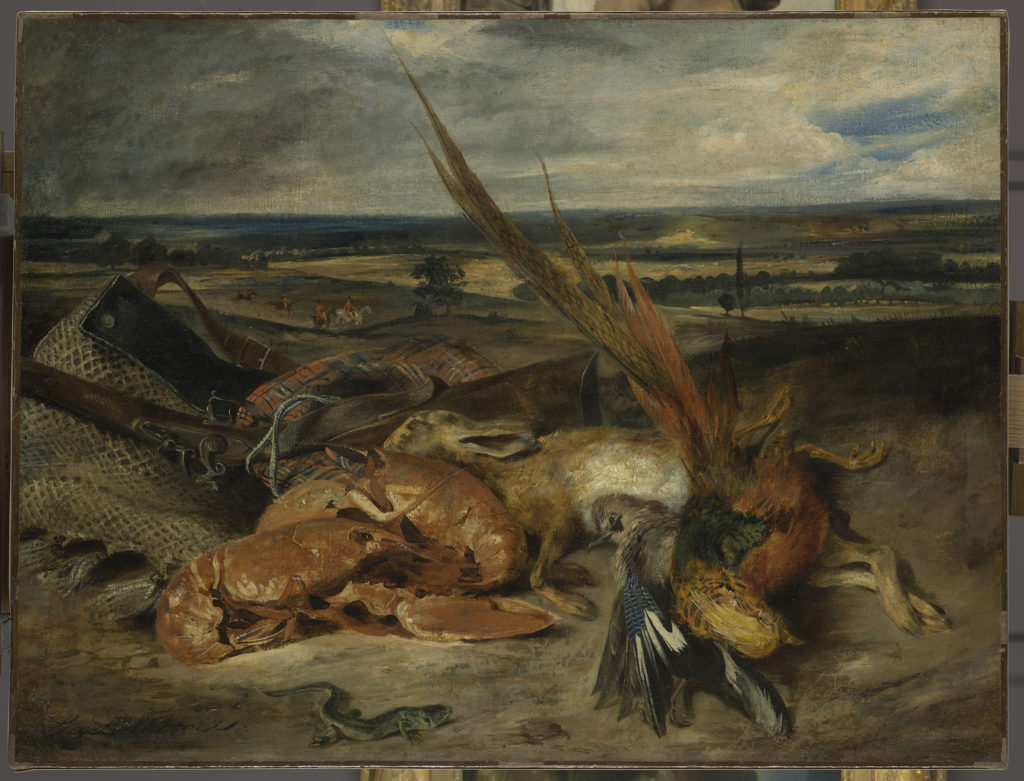
Eugène Delacroix, Still Life with a Lobster (1827). Musée du Louvre, Paris © RMN-Grand Palais (musée du Louvre) / Stéphane.
Maréchalle

Eugène Delacroix, Macbeth and the Witches (1825). Städelsche
Kunstinstitut und Städtische Galerie, Frankfurt.
© Städel Museum – U. Edelmann – ARTOTHEK
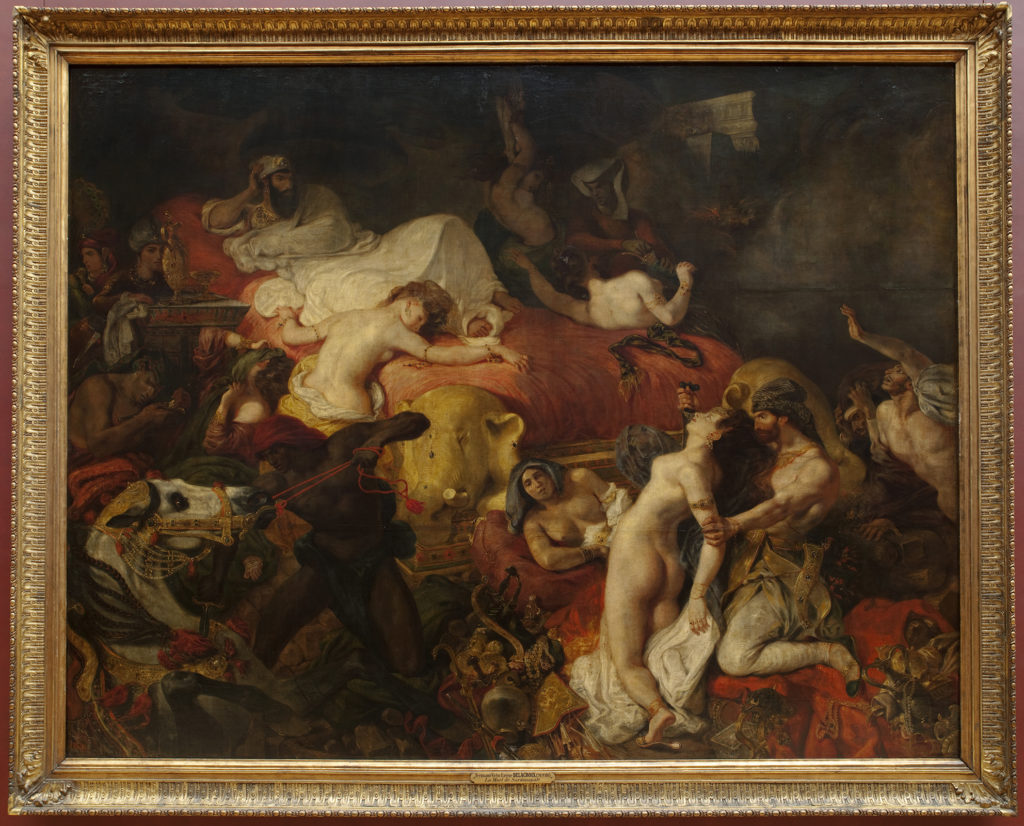
Eugène Delacroix, The Death of Sardanapalus (1827). Musée du Louvre, Paris © Musée du Louvre, dist. RMN – Grand Palais / Angèle Dequier.

Eugène Delacroix, Massacres at Chios (1824). Musée du Louvre, Paris © RMN-Grand Palais (musée du Louvre) / Stéphane Maréchalle / Adrien Didierjean.
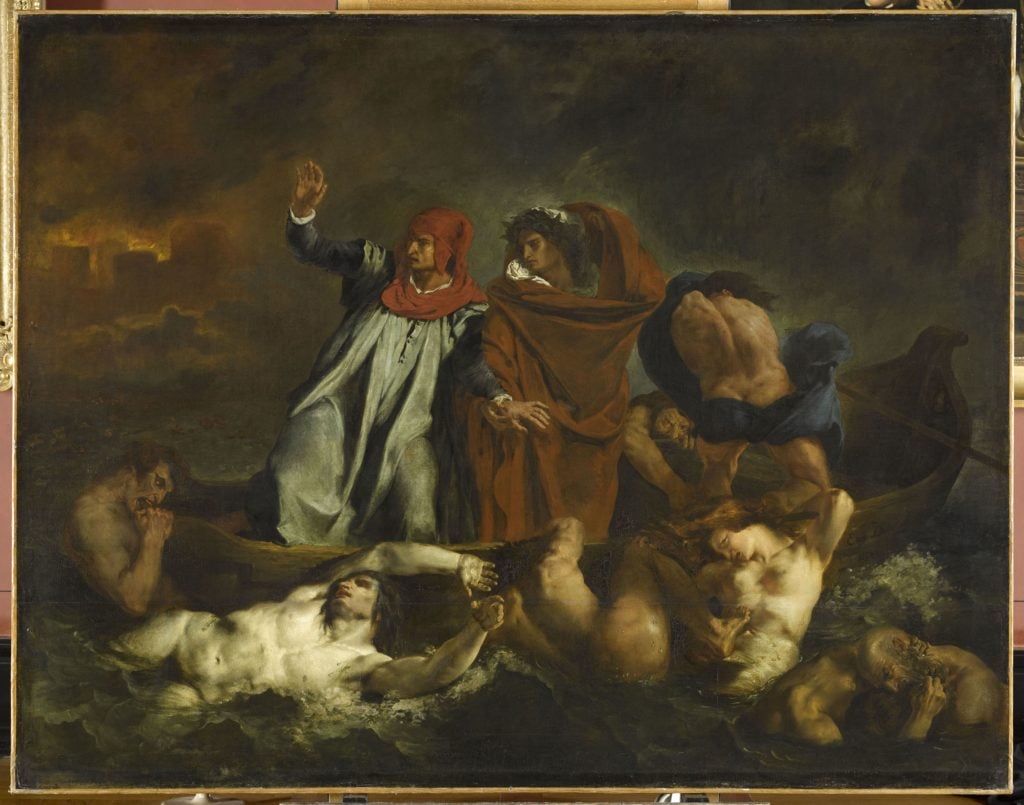
Eugène Delacroix, The Barque of Dante (1822). Musée du
Louvre, Paris © RMN-Grand Palais (musée du Louvre) / Franck Raux.